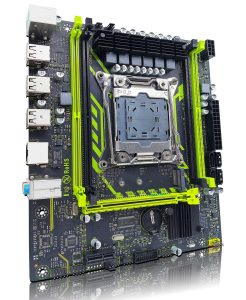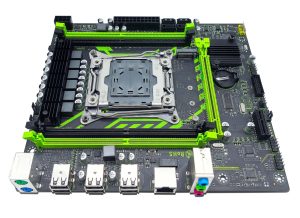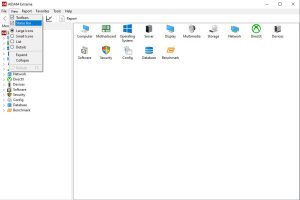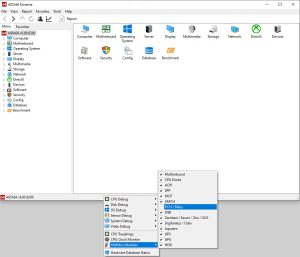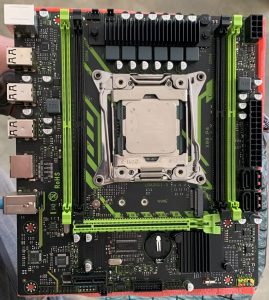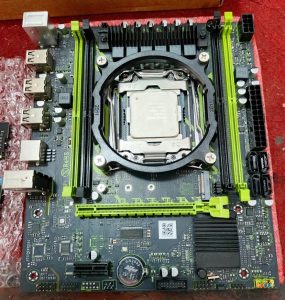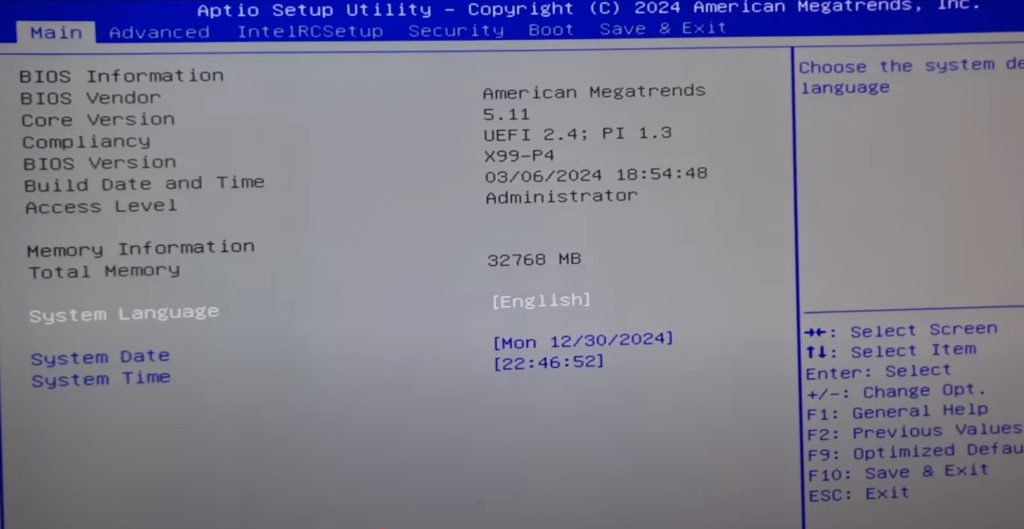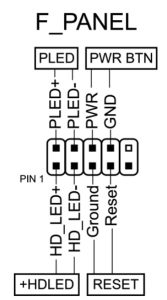Table of Contents
The ZSUS X99-8D4 is about as budget as it gets for LGA 2011-3 motherboards.
It’s basically a stripped-down X99-P4 from the same manufacturer (they didn’t even bother changing the PCB markings) designed for entry-level builds.
There’s also a DDR3 version called the X99-8D3 if you’re going that route.
Specifications
| Model | X99-8D4 |
|---|---|
| Socket | LGA 2011-3 |
| Chipset | HM55 |
| Supported Processors | Intel Core i7 (5000, 6000 series, Haswell-E/Broadwell-E) Intel Xeon E5-1600 v3/v4, E5-2600 v3/v4, E5-4600 v3/v4 (Haswell-EP/Broadwell-EP) |
| VRM Configuration | 3 phase (6 virtual via doublers) Total MOSFETs: 12 (6 high-side + 6 low-side) |
| Maximum Recommended TDP | ≤90W (v3 processors) ≤100W (v4 processors) |
| Supported Memory | 4 x DDR4 DIMM (dual-channel) with ECC and non-ECC support Maximum capacity: 64 GB |
| Sleep Mode Support | No |
| Expansion Slots | 1 x PCI-e x16 (Gen 3.0) 1 x PCI-e x1 (Gen 2.0) |
| Storage | 4 x SATA 2.0 1 x M.2 NVME (Gen 3.0 x4) |
| Fan Connectors | 1 x CPU cooler (4pin) 2 x case fans (3pin) |
| PS/2 Ports | 2 (mouse + keyboard) |
| USB 3.0 Ports | - |
| USB 2.0 Ports | 6 (+ front panel support) |
| Network | Gigabit LAN (RTL8168H \ RTL8111H) |
| Audio | 5.1 channel (ALC662 \ ALC897) |
| TPM 2.0 header | No |
| Form Factor & Dimensions | mATX 215 x 190 mm |
| Approximate Price | $35 - $40 (Aliexpress) |
This board runs on the HM55 chipset, which was originally designed for first-gen Core i mobile processors back in 2010. Few could have imagined that this 15-year-old mobile chipset would end up powering LGA 2011-3 builds in 2025.
Using HM55 keeps costs rock-bottom, but you’re sacrificing pretty much every modern feature. No USB 3.0, no SATA III (though there is a M.2 slot), and just one PCIe x1 slot if you want to add back missing functionality with expansion cards.
Don’t expect much from the onboard audio either. Having working sound at all is a win here.
The power delivery is equally basic – standard budget board fare with three dual-phase VRM configurations. This setup handles entry-level processors just fine, but don’t push it.
We don’t recommend processors over 100W TDP, but if you must – make sure you’ve got extra airflow over the VRM area!
Naturally, the X99-8D4 comes with all the usual quirks you’d expect from Chinese motherboards:
Revisions
There are at least two versions floating around. The main difference is M.2 support – the first revision only works with NVMe drives, while the second has jumpers to switch to NGFF mode. We haven’t identified other changes between revisions.
BIOS Capabilities
The stock BIOS runs on American Megatrends code, lacks any modern graphical interface, and has all the typical issues you’d expect from Chinese firmware.
Unfortunately, this board’s obscure chipset creates real headaches for BIOS backup and flashing. Standard tools like Intel Flash Programming Tool simply don’t work with HM55. You can try Afudos/Afuwin, but that only creates a BIOS region dump. Full flashing and backup requires a hardware programmer!
So if you’re counting on features like memory timing adjustments, ReBAR support, or overclocking unlocked processors – this motherboard will probably disappoint you.
However, if you’ve got a programmer handy, you might be able to flash BIOS files from similar boards like the Huananzhi X99-P4T and Huananzhi X99E-K4.
| Chipset | BIOS version & date | Ram Timings | ReBAR | Unlocked CPU OC | Turbo Boost unlock | Undervolt | Notes & Link |
|---|---|---|---|---|---|---|---|
| HM55 | X99P3 Ver:003 02/22/2024 | - | - | - | - | - | Stock BIOS from X99-8D3. For SPI chip programmer only. Not tested. [Download] |
| HM55 | X99E Ver:1.0 10/27/2023 | - | - | - | - | - | Stock BIOS from Huananzhi X99E-K4. For SPI chip programmer only. Not tested. [Download] |
| HM55 | X9PD3 Ver:001 10/31/2023 | + | - | - | - | - | Mod BIOS (based on Huananzhi X99-P4T). For SPI chip programmer only. Not tested. The primary RAM slots may have changed. [Download] |
| HM55 | X9PD3 Ver:001 10/31/2023 | + | - | - | + | -50 mV | Mod BIOS (based on Huananzhi X99-P4T). For SPI chip programmer only. Not tested. The primary RAM slots may have changed. [Download] |
Got an original BIOS or compatible firmware? Share it in the comments or send it through our contact form. You could help a lot of board owners out there.
Frequently Asked Questions
The board won’t boot, black screen, etc. What should I do?
Check out our guide covering the most common LGA2011-3 issues.
Where can I find drivers for this board?
Our current driver collection for socket 2011-3 boards is right here.
Is there a manual available, maybe a PDF?
The official ZSUS manual can be downloaded here.
Where’s the BIOS chip located?
To the right of the chipset heatsink – you can clip a programmer right onto it.
How do I connect the front panel?
Bottom Line
The ZSUS X99-8D4 is probably the most stripped-down LGA 2011-3 board we’ve come across. No modern ports, weak VRMs, thin PCB, unfinished BIOS, and flashing headaches galore.
That said, it’ll get you a working system for rock-bottom money. These boards make sense if you’re working with an extremely tight budget, but if you can swing a bit more cash, you’re better off grabbing something more refined, like the Machinist X99-PR9 with its decent stock BIOS.


